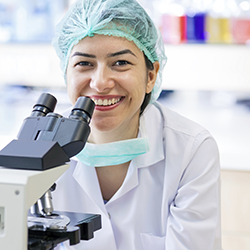Training a new generation of nanoscientists
Nanomaterials have changed the face of virtually every field from biomedicine to electronics to energy and beyond. The training network established with EU support of the DYNAMOL(opens in new window) (Dynamic molecular nanostructures) project made an important contribution to continued progress through the scientific development of 11 early-stage researchers and one experienced researcher. The project brought together nine academic partners and three industrial ones – a balance ensuring that fundamental science will lead to applications and commercialisation. DYNAMOL focused on preparation of nanostructures exploiting dynamic covalent chemistry. It combines the robustness of covalent bonding with the error correction capability of reversible supramolecular chemical reactions. Excellent progress led to numerous novel architectures and applications in new devices. Functionalised nanoparticles and associated fluorescent assays were used to recognise biomolecules such as DNA, lectins and amino acids. Boron-based ligands developed by scientists were used to synthesise nanocage structures and self-assembled highly branched (dendritic) architectures. In further work, researchers were able to modulate guest uptake and release (the nanocage forms a so-called host-guest complex). They also developed a new family of dynamic amphiphilic structures based on dendritic scaffolds able to release a probe in response to a thermal stimulus or ligand binding. Finally, solid-state electrochromic devices were fabricated using polymer films constructed in the project. A supramolecular nanoparticle-based biosensor with tuneable sensitivity was made from a functionalised glass microfluidic channel. In addition to individual training at host institutions, secondments among partner labs were a vital part of the project, fostering also fruitful collaboration. The training network organised and implemented six workshops and a summer school including four training courses on key techniques. Fellows also received training and obtained experience in non-technical areas fundamental to leading labs and managing grants in the future. These activities included participating in language and specific skills courses and preparing regular progress reports. DYNAMOL led to innovation and applications as well as 18 articles published in peer-reviewed scientific journals and around 14 more in the pipeline. In addition, it has left a legacy of well-trained young scientists to lead the way in dynamic covalent chemistry and novel nanoarchitecture synthesis and application.



